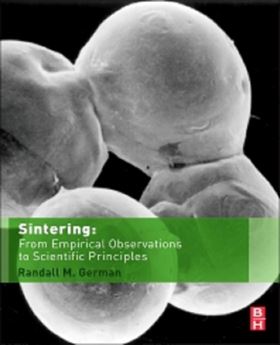 Randall M. German | Sintering: From Empirical Observations to Scientific Principles | Elsevier | 2014 | 544 pp. | ISBN: 9780124016828| Print/eBook: EUR 97.50
Randall M. German | Sintering: From Empirical Observations to Scientific Principles | Elsevier | 2014 | 544 pp. | ISBN: 9780124016828| Print/eBook: EUR 97.50G.S. Upadhyaya reviews Sintering: From Empirical Observations to Scientific Principles by Randall M. German.
This book is available to purchase via Elsevier Store.
Review
This book, ‘Sintering: theory and Practice’, was first published by John Wiley in 1996. The current book appears to have been recast in the same mould, with some modifications such as subdividing a chapter in two, and providing more up to date references. The book is divided into 16 chapters covering history, early quantitative treatments, thermodynamics and kinetics, liquid phase sintering, and sintering with external pressure. There are some changes to the new edition: the computer models chapter is a new addition, and nano-scale sintering has been carved out as a separate chapter.
Sintering practice covers technological aspects like control parameters, sintering atmosphere, and equipment etc. Here, examples from sintered materials covering both metallic and ceramic based materials are briefly provided alphabetic order. This section could have been avoided as there are already excellent books covering this area, and the space saved could have been used for other critical assessments.
The references (1427 in all) are profuse and some of them needed to be discussed more critically, however, for a newcomer to the field, the extensive bibliography with full titles makes his/her job much easier. While describing various theories of sintering, the author is rather silent on the subject of the electronic model, which along with Prof. Z.A. Munir he has performed rigorous studies (refer citation No. 48, page 383); this is the only tenable model to discuss the activated sintering of refractory metals in entirety.
The book is sympathetic to the reader and is aimed at a wide spectrum of scientists. One thing that should be mentioned is that the index could have been made more elaborative. Overall, the book will certainly find place in libraries of many professionals engaged in sintering aspects of particulate materials.